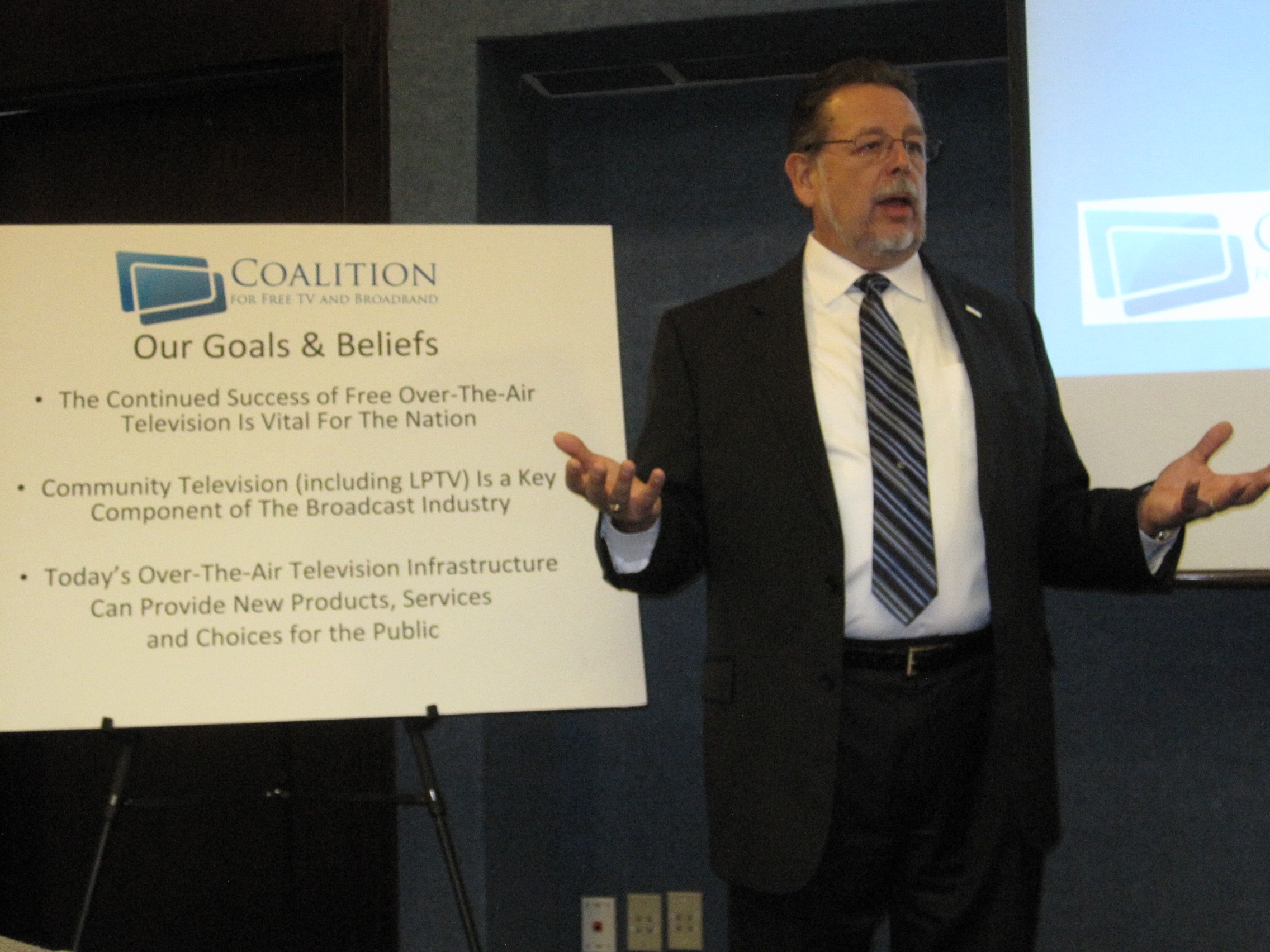Broadcasters Lay Out Revenue-Raising Broadband Plan

WASHINGTON: A group of mostly low-power broadcasters want to carry the video overload of wireless networks rather than give up spectrum. The Coalition for Free TV and Broadband today unveiled what its calling an “alternative to the auction of broadcast spectrum” at a news event at the National Press Club. Gary Arlen, who attended the event, said the Coalition laid out a short-term plan that would generate higher revenues for the U.S. Treasury, and a long-term plan that it says would make more efficient use of the spectrum. The basic idea is for wireless carriers to be able to “off-load” IP traffic onto the broadcast TV infrastructure, rather than auction off TV spectrum to wireless providers for increasing video-related data traffic.
“There is not enough spectrum in the universe” for the predicted rise in data traffic, said Mark Aitken, vice president of advanced technology for Sinclair, which is not listed among coalition members, but has been actively lobbying against TV spectrum incentive auctions. “That’s why the spectrum should be managed more intelligently... Broadcast TV and wireless operators can work to provide complimentary, shared services and infrastructure to more efficiently use the UHF spectrum.”
The Federal Communications Commission, at the behest of the Obama Administration, is pushing hard for Congressional approval to hold incentive auctions for 40 percent of the broadcast TV spectrum. The incentive is cash in return for voluntary relinquishment of licenses, so the spectrum can be redesignated for wireless broadband. The National Association of Broadcasters says it will support incentive auctions as long as they are voluntary. However, the folks running TV stations are not so amenable. One local broadcaster who recently sat in on an FCC spectrum auction meeting with wireless providers said he was shocked at how “aggressive” the wireless contingent was about reclaiming the spectrum.
The main reason Congress is now considering granting the FCC incentive auction authority is that it needs money to cut $1.2 trillion from the deficit before the end of the year. Such auctions are estimated by the Congressional Budget Office to yield around $15.8 billion for the Treasury. Aitken and the Coalition folks say a broadcast overlay such as theirs could put as much as $60 billion in Treasury coffers within 15 years, and as much as $216 billion going forward. This is because federal regulations require broadcasters to pay the government a 5 percent fee on any ancillary service they provide that’s not related to the delivery of free TV.
The Coalition say their plan would eliminate the need for spectrum auctions and preserve as many as 4,000 TV operations. The NAB estimates there are 4,095 full-power, low-power and translator TV operations on Chs. 31-51--the broadcast spectrum targeted by the FCC’s National Broadband Plan.
Aitken was joined at the event by Coalition chief, Irwin Podhajser, a broadcast consultant in the LPTV community. Podhajser said LPTV and translators were "essential" to the country. Randy Weiss, a low-power religious broadcast was also on hand, along with Rajiv Hararay of Business Analytix located in Edison, N.J. Hararay said his research indicated that a broadcast overlay would better enable the delivery of voice, video and data traffic because it is inherently point-to-multipoint, rather than point-to-point like cellular networks.
Without buy-in from wireless carriers, however, the plan goes nowhere. Aitken noted the need for advanced TV and wireless standards that would work together.
"The wireless folks must be at the table," Aitken said.
He said the plan would be sent to the Congressional super committee in charge of coming up with spending cuts and new revenue sources to meet the $1.2 trillion goal, and to members of the House and Senate telecom committees.
~ Deborah D. McAdams and Gary Arlen
The professional video industry's #1 source for news, trends and product and tech information. Sign up below.
